Here are more songs to illustrate the variety that SongSprouter can produce. Click on any song image to play it (and click it again to stop it, or click on another song to interrupt the previous one).
While SongSprouter lets you drag chords and notes around to edit the composition, that has not been with any these songs. I usually do tweak the tempo, and often the loudness balance between the parts, and occasionally which sounds are used for each part. But the melodies over chord progressions here are exactly what SongSprouter composed completely automatically.
Keep in mind, though, that SongSprouter composes mostly bad songs. Typically you need to endure several bad ones before it comes up with one that's good enough to keep. (And the songs here are some selected favorites.) But with some patience you can build a collection of good ones that you can play back at any time. (And even the bad ones are often "interesting" in various ways.)

If you notice that the songs have a somewhat low audio level, the reason is that SongSprouter by default sets the loudness of each instrument so that all of its songs are fairly balanced with each other, including (for example) songs where the melody instrument is the acoustic piano whose loudness if rather low. But there are options for maximizing the loudness instead, which when used along with relatively loud instruments results in MIDI files whose loudness is more comparable to other audio sources. But all of the songs here use the default settings.

In the next song, "A +4" means A major except with a sharp fourth. This is known as Lydian mode, one of the seven diatonic modes that can be played on the white keys of a piano, with a different root note for each one.



The next one uses one of the two non-diatonic scales that are in SongSprouter. These scales are used in some West Asian, North African, and East European music, where "G -2 -6" means G major except with a flat second and a flat sixth. There are two jumps of three half-steps in these scales.


You might notice in the next one that the heuristic for whether to label a note as a C# or a Db does not always do the "right" thing. But that's just a notation matter, while the composing parameters know what they're doing.



There seems to be a preponderance of flutey melody instruments in these examples, but you can change them to any of the 128 General MIDI instrument sounds. (Though SongSprouter avoids using most of the sounds that are in the Microsoft GS Wavetable synth that it uses because they're not so pleasant. SongSprouter uses that synth because it's apparently built into every non-server copy of Windows, which lets SongSprouter work out of the box without installing anything else.)
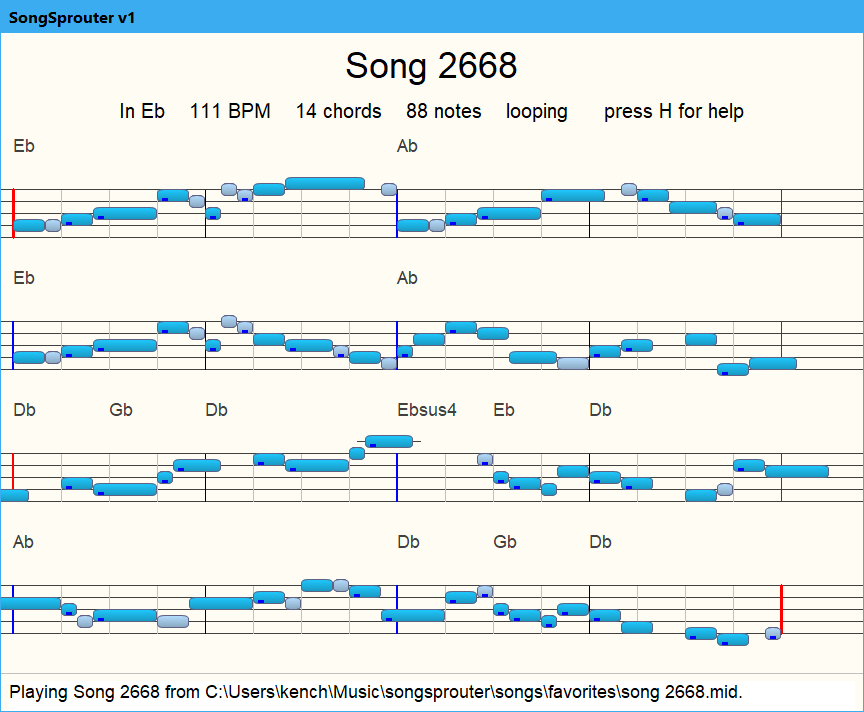

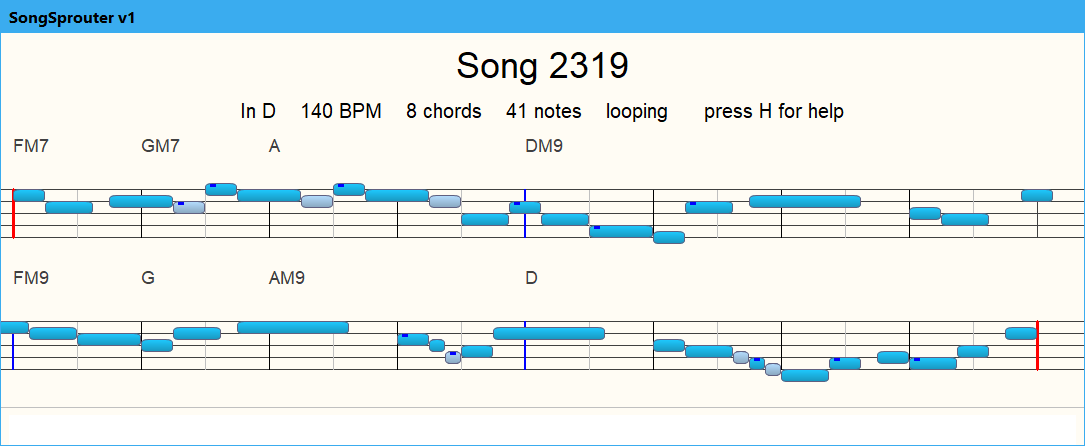


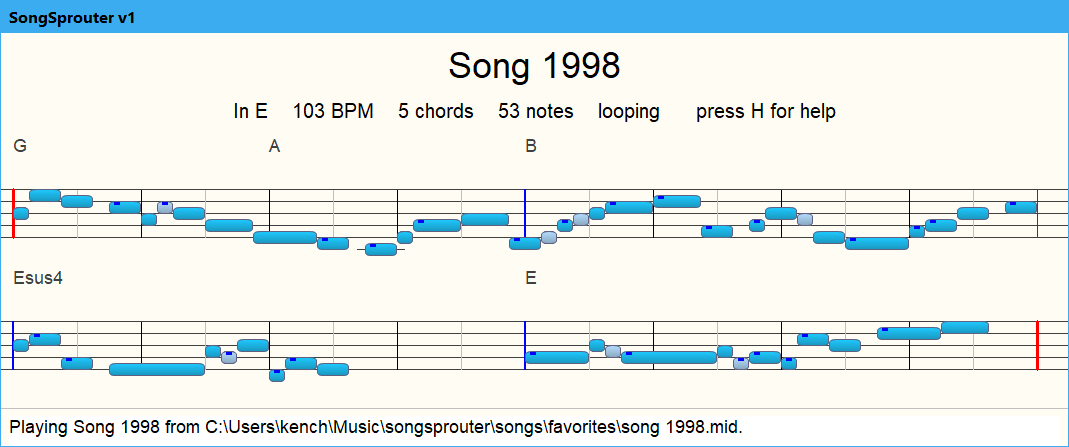

The next one uses the other non-diatonic scale, where "Abm +4 +7" is A-flat minor except with a sharp fourth and a sharp seventh.


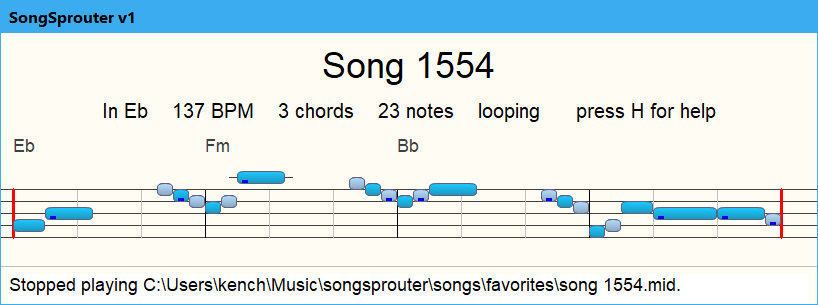
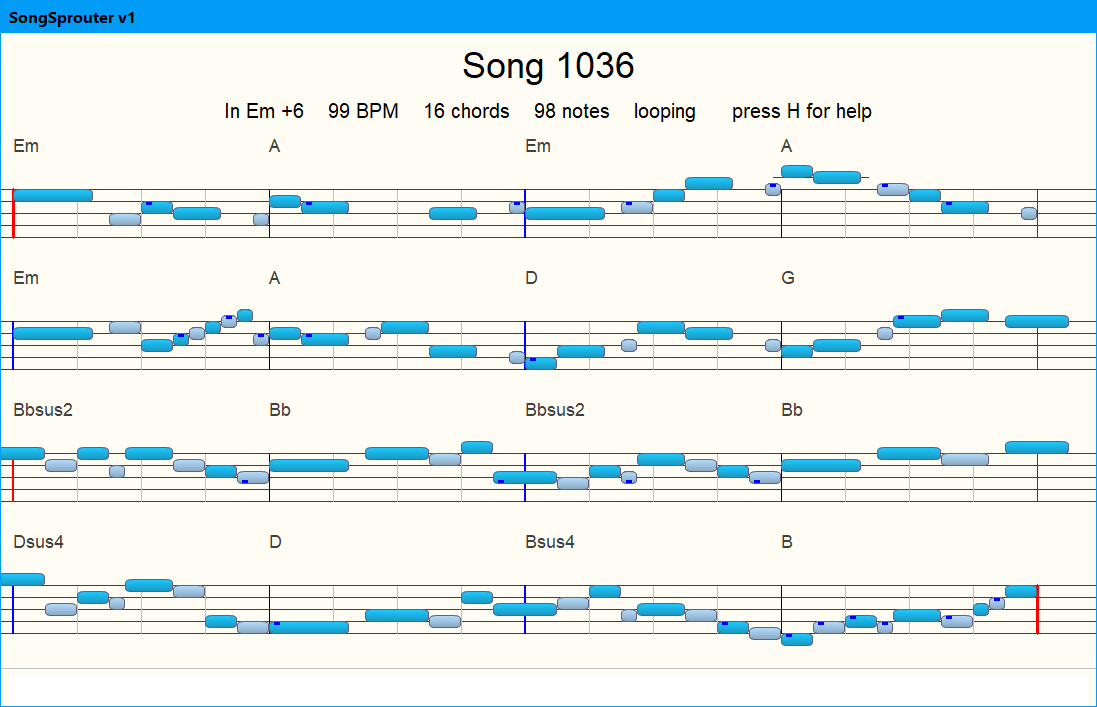
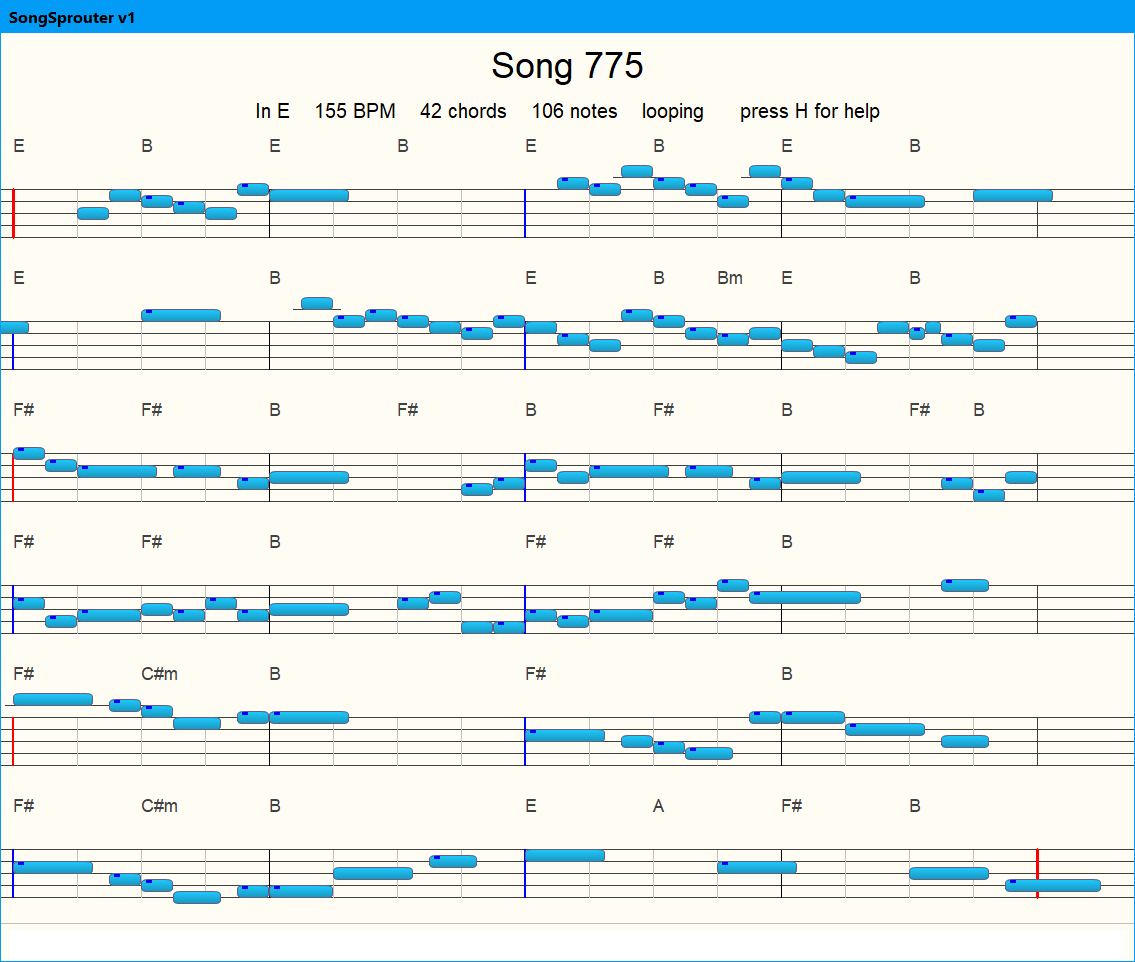
In case anyone would like the mp3s of these songs, they can be easily downloaded from the following pages. But note that these mp3s were produced only to allow anyone to hear them on the web. SongSprouter itself does not create mp3s; it creates only MIDI files that must be played through the Microsoft GS Wavetable synth to sound as intended. That synth is apparently built into every non-server copy of Microsoft Windows, and so SongSprouter works with it out of the box. (You could play the MIDI files with any synth, especially if you have software either for changing which sounds the files use and their relative loudnesses, or else for mapping the MIDI instruments in the files to ones that work in that synth for these songs. But SongSprouter only knows how to play the built-in Microsoft synth.)
These mp3s were produced by first using the free app WinAmp (http://www.winamp.com) to create WAV files from the SongSprouter MIDI files according a crucial tip found here: http://robertinventor.com/ftswiki/Tutorials:_How_to_convert_Midi_to_Wav. (Thanks for that tip! And thanks WinAmp!) Then mp3s can be produced from the WAV files by using (for example) the free app AudioGrabber (https://www.audiograbber.org/) or the not-free app Nero Recode.
http://bapd.org/ss/song3865.mp3